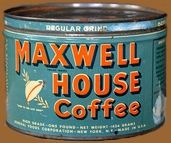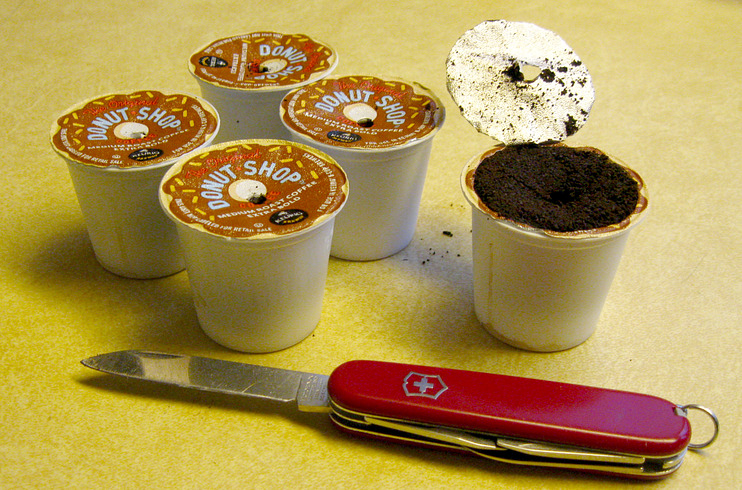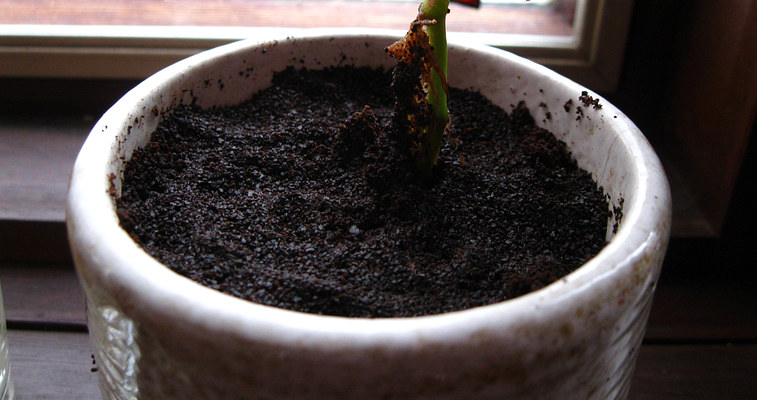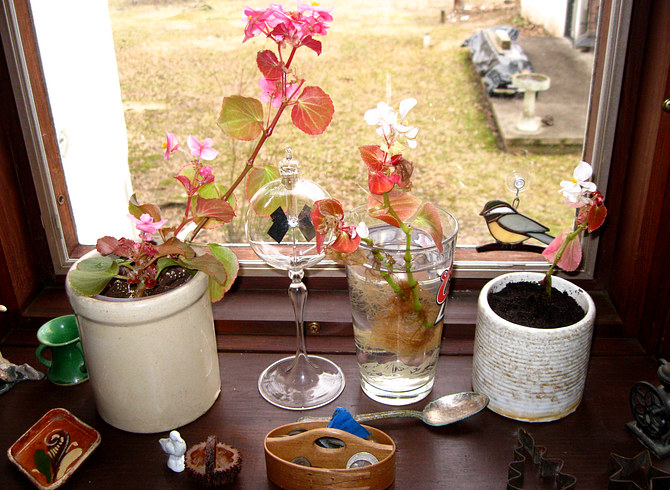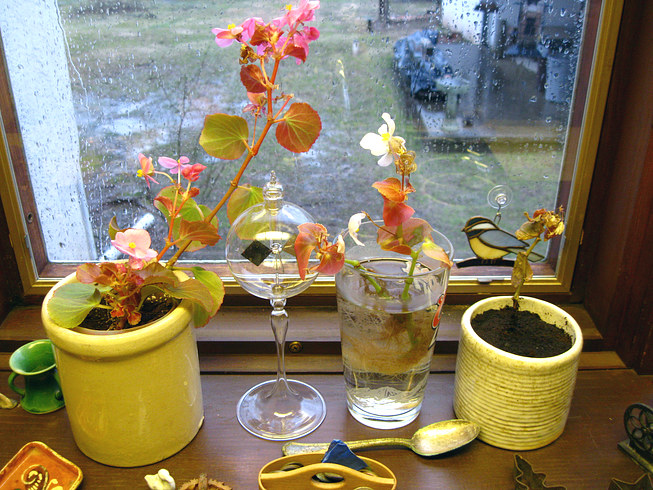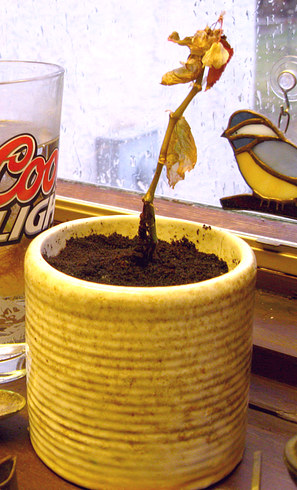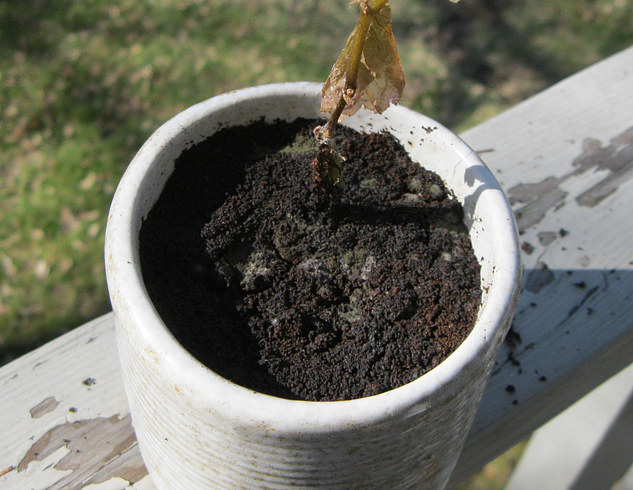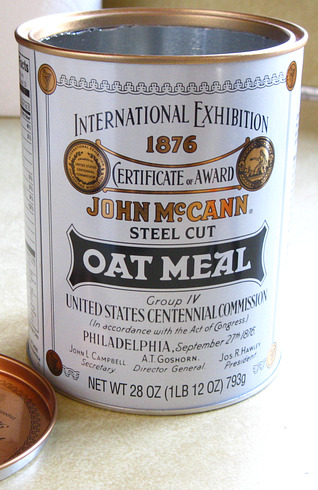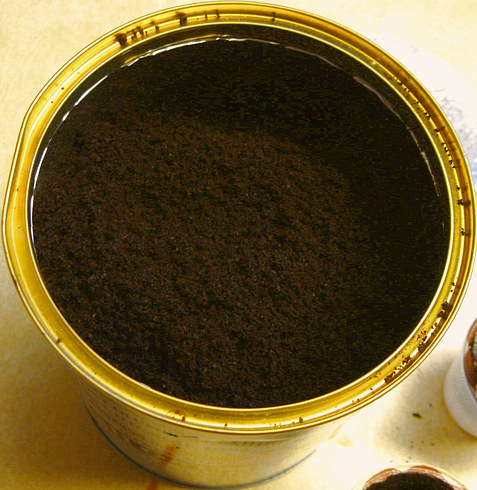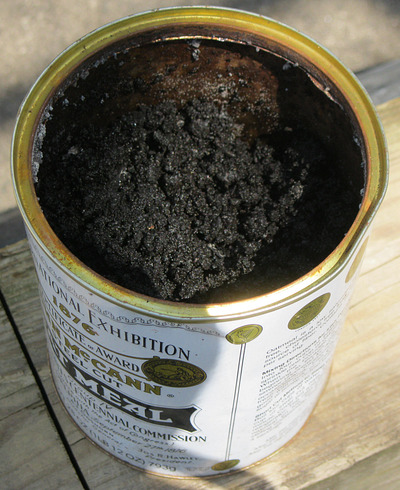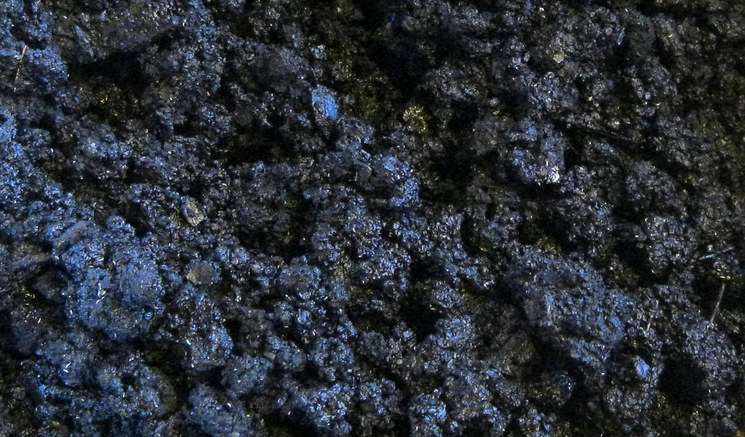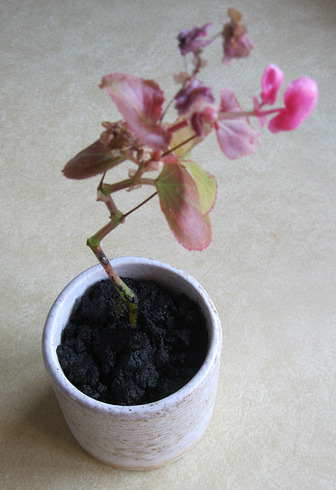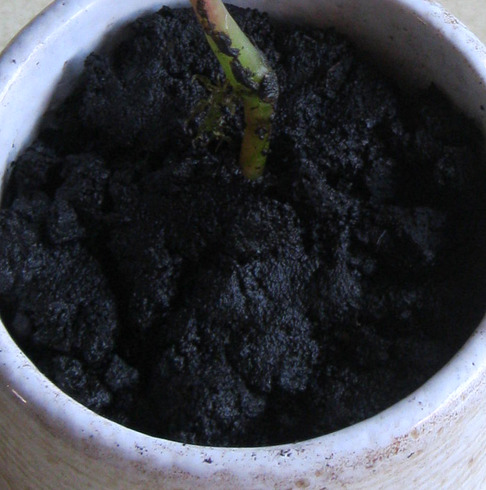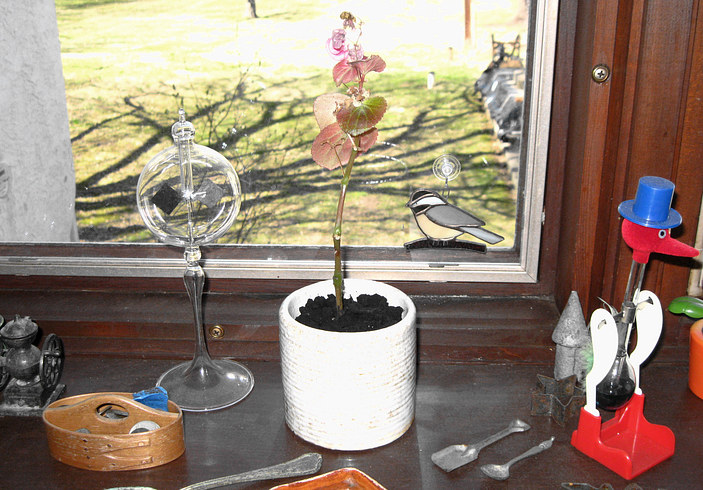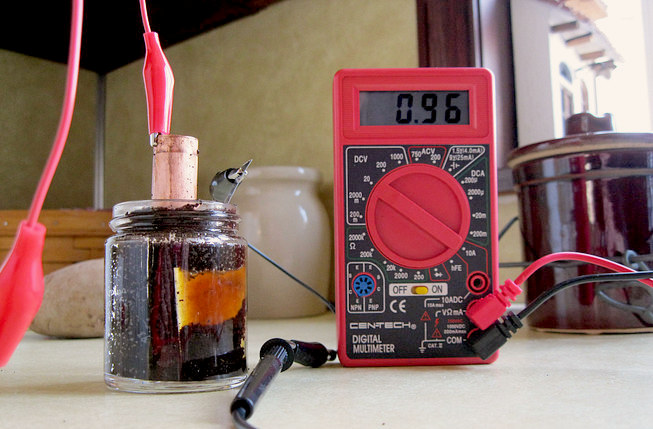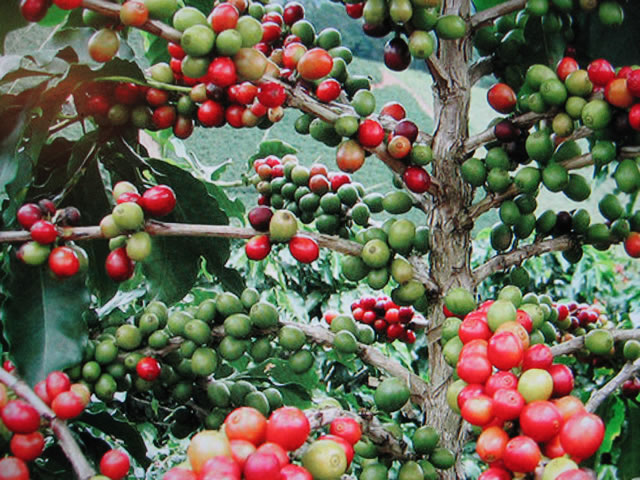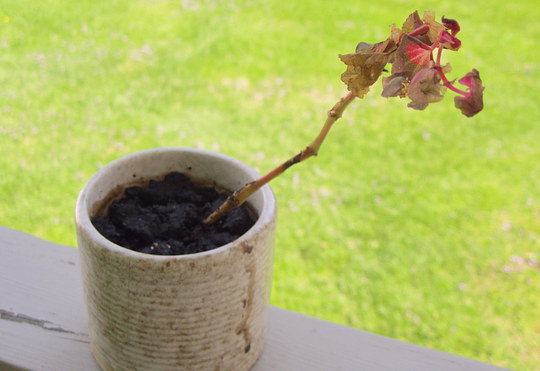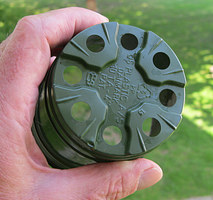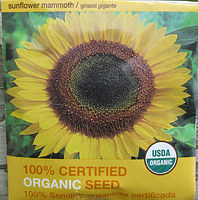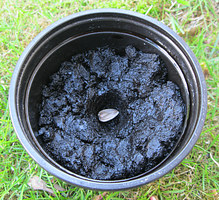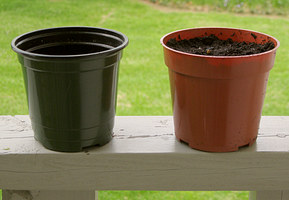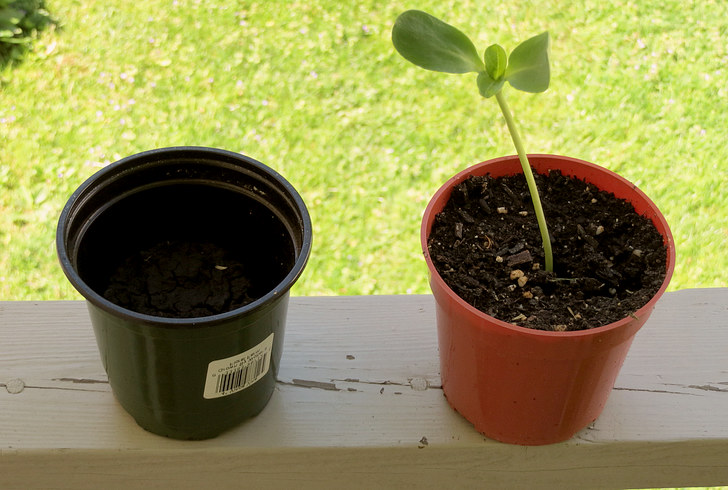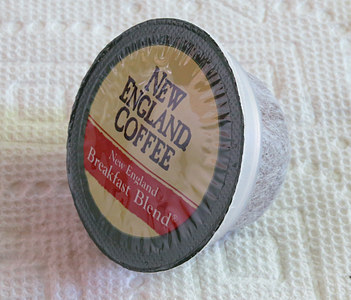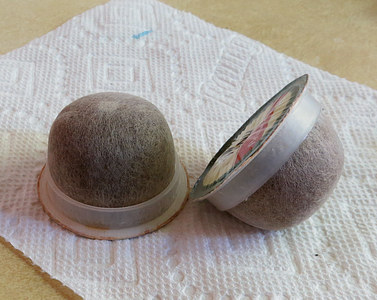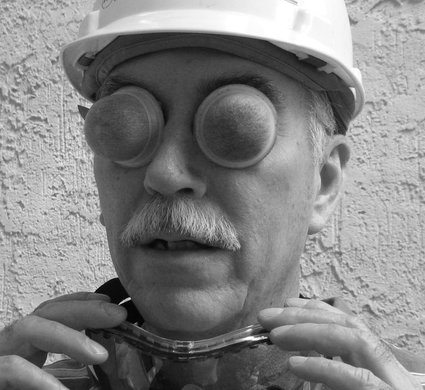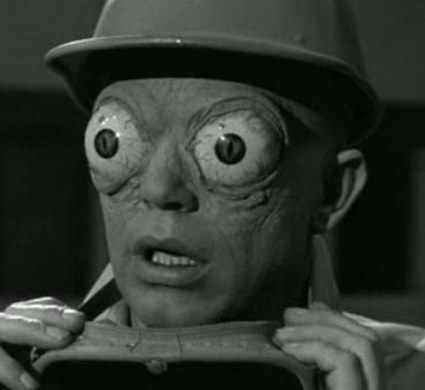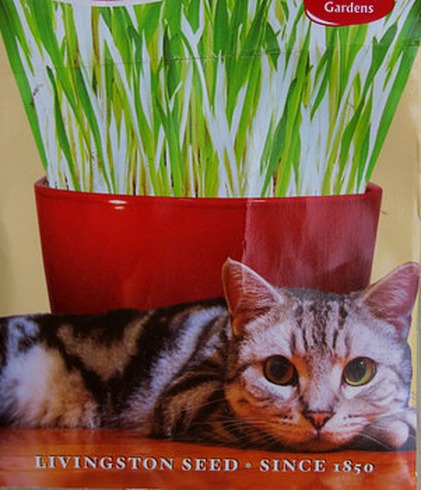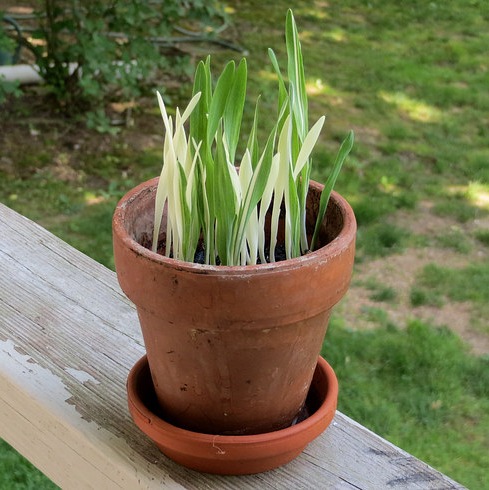|
The most widely consumed stimulant in the world is coffee. 2.5 billion cups
are brewed each day. "Good to the last drop," except that
sometimes it's not. If you leave the pot on the burner too
long, the coffee becomes bitter and acidic and an oil
appears on the surface. Single cup coffee makers alleviate
this problem.
Ground coffee becomes coffee grounds by pouring very hot
water over it. Basically, a highly prized commodity becomes
garbage almost instantly. |
|
|
|
The used coffee grounds resemble "ground" as in dirt, and we're told to put
them in our compost bins. The roasted coffee bean is very
hard and remains so after it is ground up and used to brew
coffee. Wouldn't adding coffee grounds to your compost bin
be like adding oily, acidic gravel?
|
|
|
Do coffee grounds need composting at all? Let's try to grow a plant in fresh coffee grounds.
|
|
|
|
|
|
Let's plant a begonia! |
|
On the left is a begonia. In the center are some cuttings from the begonia,
and on the right, one of the cuttings has been planted in
recently used coffee grounds. Since all the plants are the
same
plant, we have a perfect control for observing the growth of
the begonia on the right. By the way, it's March 23, 2014. |
|
|
|
|
|
In a matter of days the begonia in the coffee grounds has died. |
|
|
|
|
|
Mold started growing in it after a week.
Ok, so you can't grow a plant in coffee grounds. Hahaha, that's what
you'd expect! |
|
|
|
|
|
|
|
Can you compost the coffee beans? |
|
|
|
|
|
|
|
I filled an empty oatmeal can with coffee grounds and put it outside on the
porch. For 8 months. |
|
|
|
|
March 30, 2014 |
April 11, 2015 |
|
Once a week I stirred the grounds. I didn't see anything happening and I
figured the pH of the coffee was killing off any bacteria
that might be trying to compost the beans. I obtained some
real compost from my neighbor and mixed it in, but I think
the bacteria in the compost died, too.
During the summer I left the lid off the can occasionally
and little larvae appeared in it. I thought that was a good
sign, but then they all died. When winter approached I
brought the can in and put it under the dining room table. I
forgot all about it. Then I forgot where I put it. (It
wasn't the only thing under the table.)
One day I found it while I was cleaning up and on April 11,
2015, the "Great Coffee Grounds Experiment" continued.
I opened the can and looked inside. It still smelled faintly
like coffee, but it didn't look like coffee.
|
|
|
|
|
This is how the grounds looked after being in the can for a year. |
|
|
|
|
|
|
A cutting from the
same begonia plant was put into the same pot
and placed on the same windowsill at about the
same time of year. The coffee grounds reminded me of
chocolate brownies, except they were black. |
|
|
|
|
|
|
|
The begonia after one day. April 12, 2015. No noticeable change. |
|
|
Will the begonia live or die? I think it might live, but only time
will tell.
By the way, the inventor of the K-Cup, John Sylvan, regrets that he
ever invented them because they are not recyclable. They are made of
#7 composite plastic, which is nonrecyclable in most places.
Keurig says they will have a recyclable K-Cup by 2020. FIVE years
from now? How hard would it be to make a cardboard and paper K-Cup? |
|
|
|
|
April 13, 2015: The begonia still looks the same.
Greg from CA wrote and asked about using coffee grounds as
the electrolyte in a copper-zinc battery. It produced .96
volts, slightly less than using a few drops of vinegar (1
volt) but more than using a potato (.92 volts).
April 14, 2015: The begonia still looks the same. A good sign. By this
time last year it was dying.
Keurig announced yesterday they made 4.7 billion dollars in
revenue in 2014; 3.1 billion dollars of that was from the
sale of K-Cups. Not surprising, the construction of our
coffee maker was outsourced to Simatelex, whose factories
are in Shenzhen, China.
April 15, 2015: No change in the begonia. Austin H. from Australia
wrote and said to name the coffee battery the "Simpson
Cell."
April 16, 2015: The begonia doesn't seem to be dying, but it doesn't
seem to be growing, either. I gave it a bit of "Miracle
Grow."
April 20, 2015: The begonia is growing a new leaf!
I found out coffee beans aren't beans, they're seeds. They are the pit of a
"cherry" that grows on a coffee plant. Later, while
listening to "You Bet Your Garden" on WHYY, Mike McGrath
recommended spreading coffee grounds around Azaleas and
Rhododendrons after they flower to make the soil acidic.
May 2, 2015: The begonia is in pretty bad shape.
|
|
|
|
|
|
May 5, 2015: Let's start over, but with a sunflower seed. It grows a
lot faster than a stupid begonia. Here we have a pot
with the coffee grounds from the begonia experiment,
and a "control" pot with potting soil. |
|
|
|
May 14, 2015: Humpf!! Well....
that didn't work. |
|
|
|
|
|
In the meantime, Andrea found these "no cup
K-Cups." They have a small ring of plastic to hold the
filter and coffee grounds. The two on the right are used but are
dry.
|
|
|
|
|
|
While we're waiting to see if we can get a sunflower out of the coffee
grounds, we can pretend we're "The
Mutant"
from The Outer Limits. Carry two
coffee pods in your pocket to break the ice at
parties.
|
|
|
|
| |
|
|
| May 16, 2015: I couldn't find any more sunflower seeds, so I
planted CAT GRASS. (Click on the picture.)
|
|
|
Well, there you have it. It's "sort of" possible
to compost coffee grounds. Some things will grow in them and some
won't.
How long did it take you to read this? You'll never
get that time back. |
| |
|
|
We now return you to your regularly scheduled program, which is
already in progress. |
|
|
|
|
| |
